No Playroom? Try These Toy Storage Ideas for the Living Room
When your home doesn’t have a logical play space (such as a dedicated playroom), adding toy storage to a living room or family room can be a great solution. Not only does it tend to be one of the bigger rooms in a home, it’s also (presumably) where everyone hangs out. But if you’re worried about relaxing, hosting and TV watching with toys constantly underfoot, don’t despair. We recently had to absorb our playroom into the family room, and used a bunch of clever, easy, and effective toy storage solutions to pull it off!
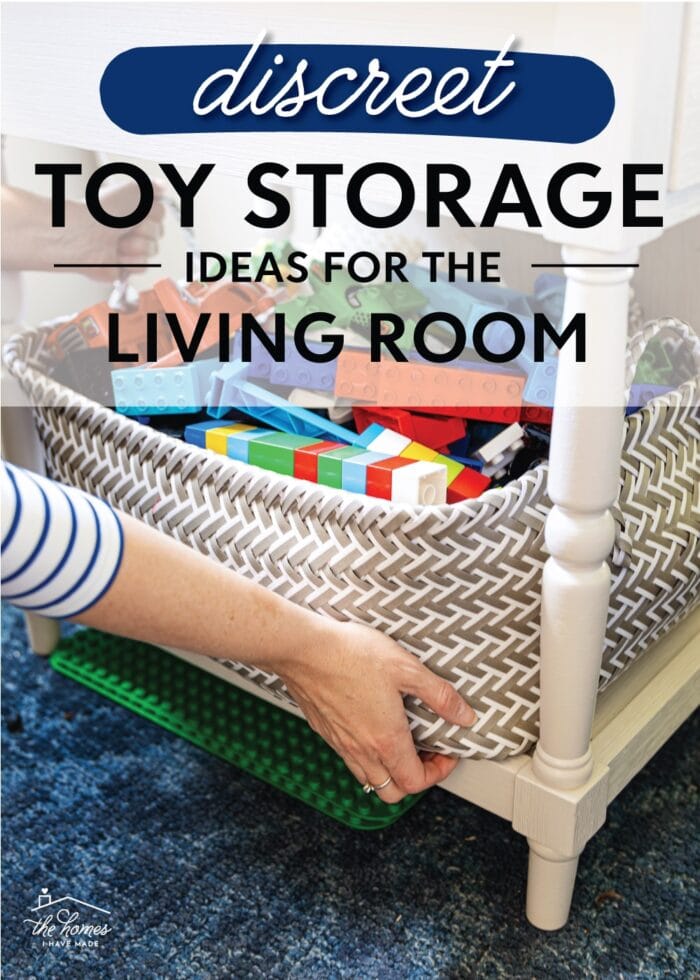
Can You Spot the Toys In Our Living Room?
Although our North Carolina home was rather spacious, we couldn’t really spare space for a dedicated playroom. After considering various options, we ultimately decided that the large living room would need to serve double duty as a play space too.
But this came with some risks. Sitting right inside the front door AND being a space where we’d gather, host, entertain, and relax as adults, we were concerned about constantly sitting in a mess of toys or even worse…constantly tidying up a mess of toys!
Our tried-and-true toy storage setup of IKEA cubbies and bins (that we’ve used in 4 straight homes) didn’t fit in this room thanks to the placement of windows, the fireplace, built-ins, blanket ladder, etc. So not only did I have to come up with new ways to store our kids’ toys, but I needed solutions that were sneaky, stylish, and subtle as well.
Let’s see how I did! Below are some final shots of our combined living room and playroom:
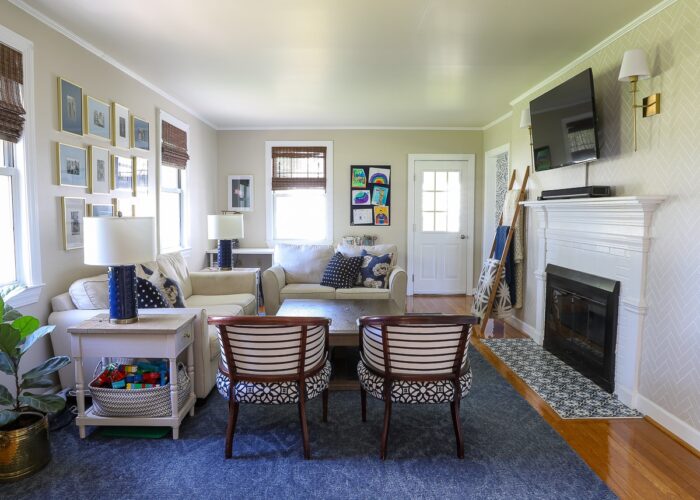
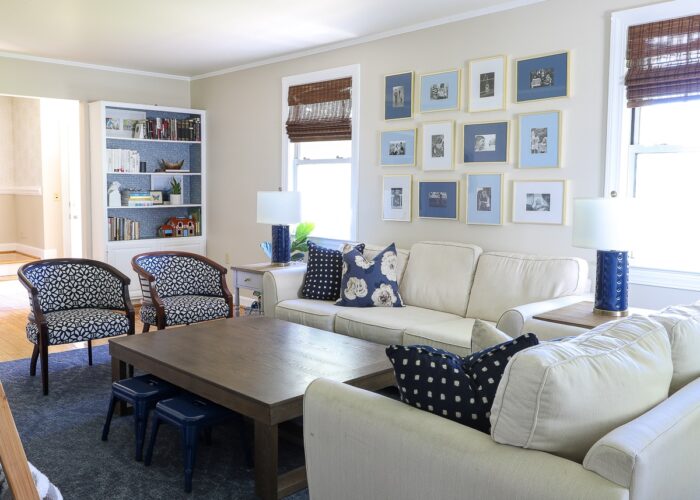
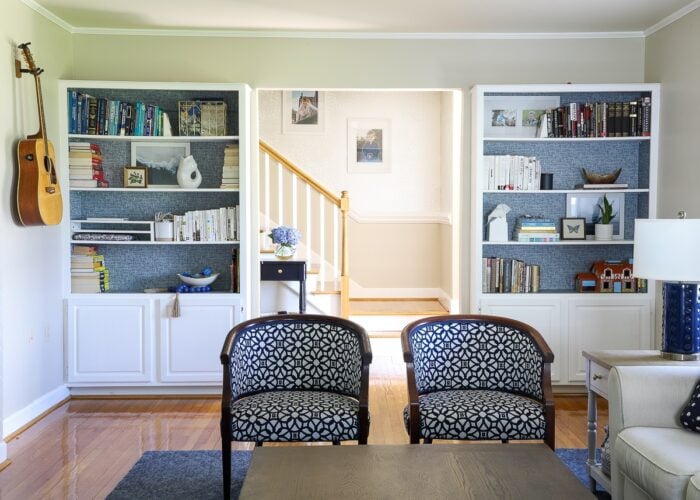
At first glance, you likely (hopefully!) don’t know how many toys are really in this room. So let me open the cabinets, pull out the baskets, and show some different angles so you can see all the strategies I used to hide toys make this room functional for the whole family!
Tip #1 – Put Toys Inside “Real” Furniture
When you’re outfitting a dedicated playroom, it’s easy (and fun!) to pick very kid-friendly furniture. Cubbies with storage bins, small play tables, bright colors, and youthful motifs all help create a child-friendly space. But in a living room or family room that’s for adults too, these choices can reduce the overall sophistication and style.
I recommend ditching the toy box or trunk, plastic drawers, dedicated toy organizer, and brightly-colored systems and instead focus on using “real” or “normal” living furniture to hold toys.
Here are some examples…
Shelves Behind Close-able Doors
This includes furniture pieces like media stands, armoires, bookcases, wardrobes, and console tables with doors. Close-able doors allows you to completely cover obvious toy clutter that is otherwise hard to conceal.
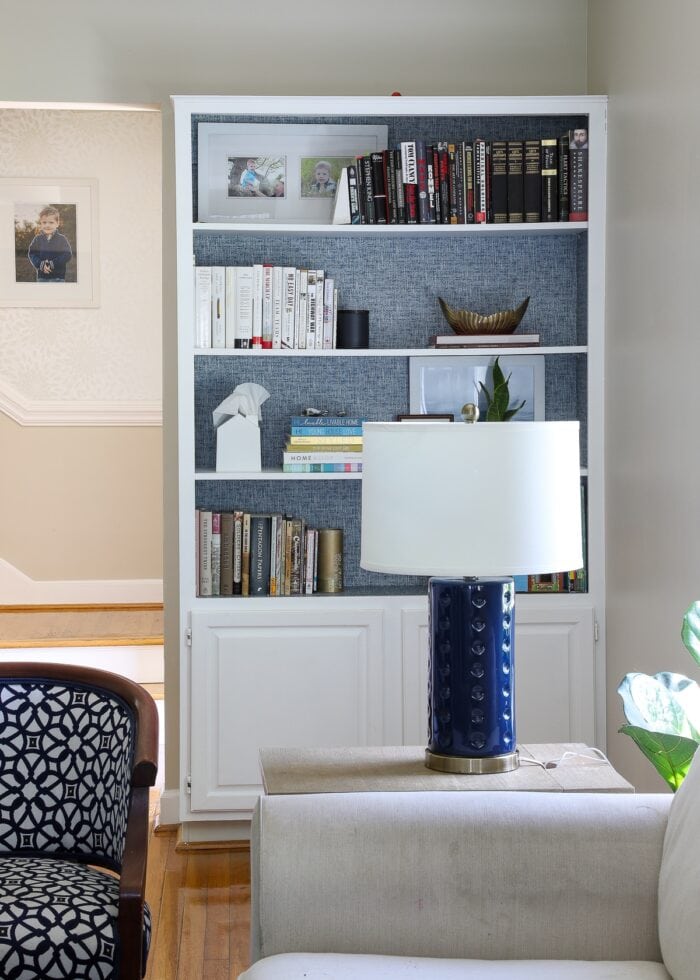
Our living room featured two, tall built-in bookcases. Although it took some trial-and-error to find baskets that actually held our toys AND fit on these shelves, I was ultimately able to store a vast majority of our toy collection in these two sets of lower cabinets.
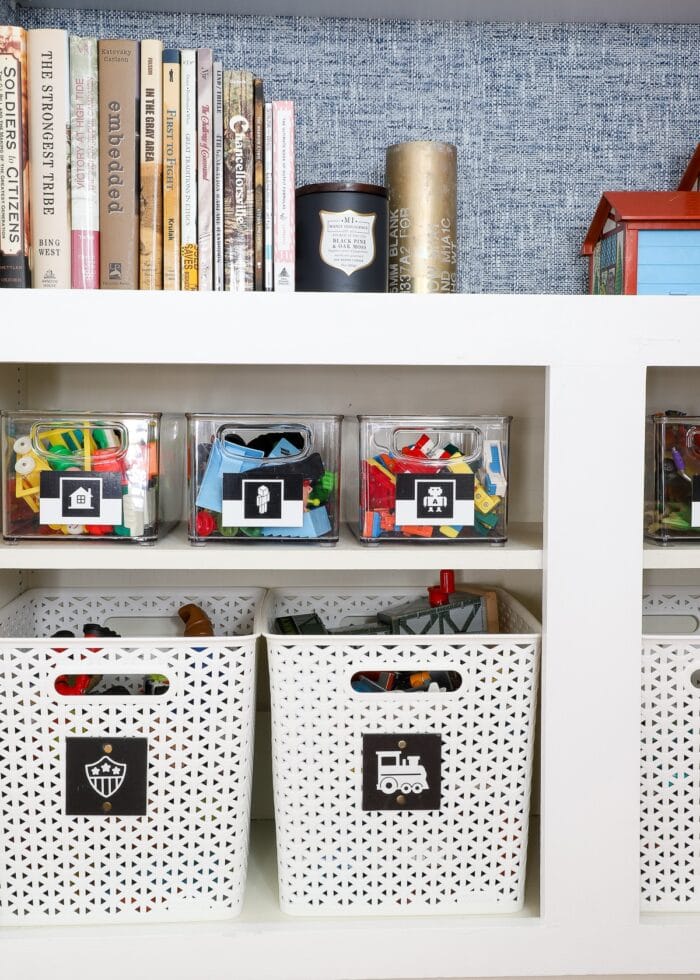
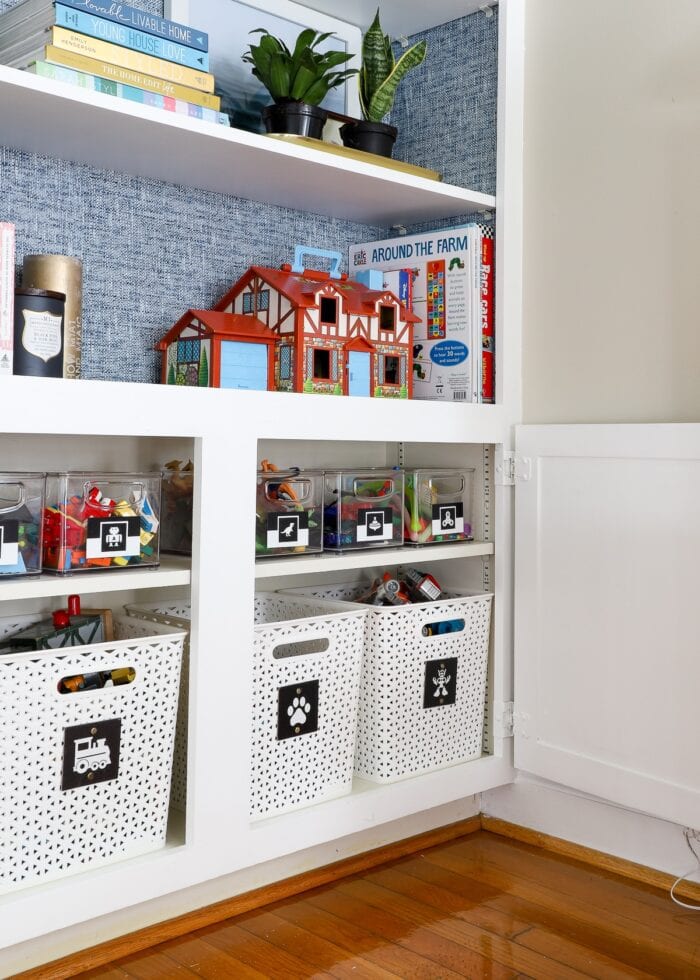
Open Shelves with Decorative Baskets
Not everything has to be concealed behind closed doors…open shelving can work too (such as doorless console tables, side tables, open bookshelves, etc). Even though these storage spots are more “visible,” using fabric, woven, or wicker baskets will appear as well-chosen decor accessories rather than obvious toy storage.
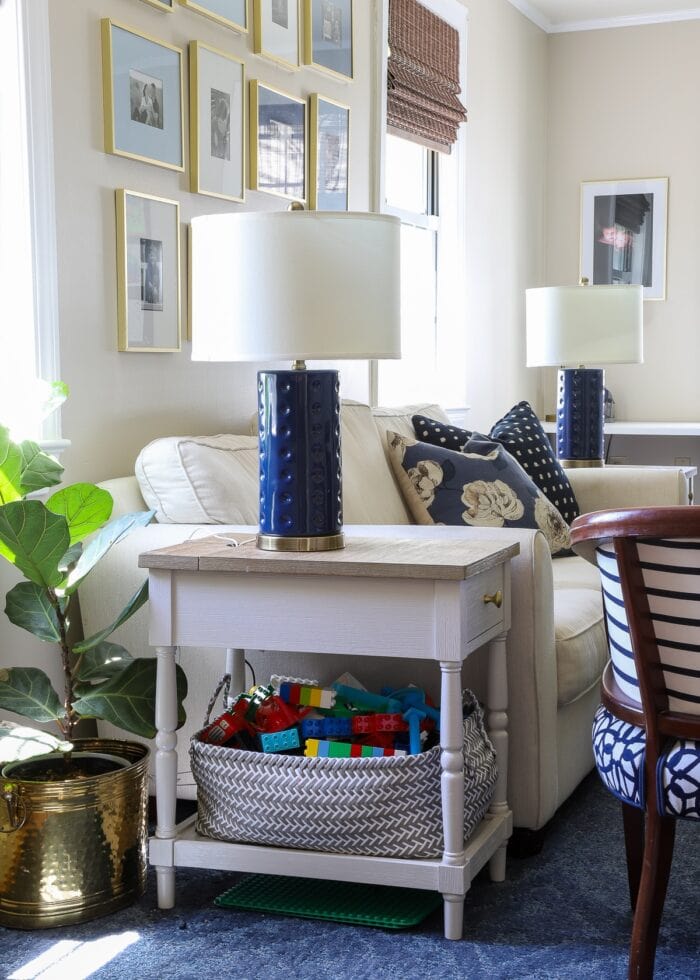
Our LEGO and DUPLO stashes were too large to fit inside the built-in cabinets, so I opted to store these items in larger (more decorative) baskets under our open side table.
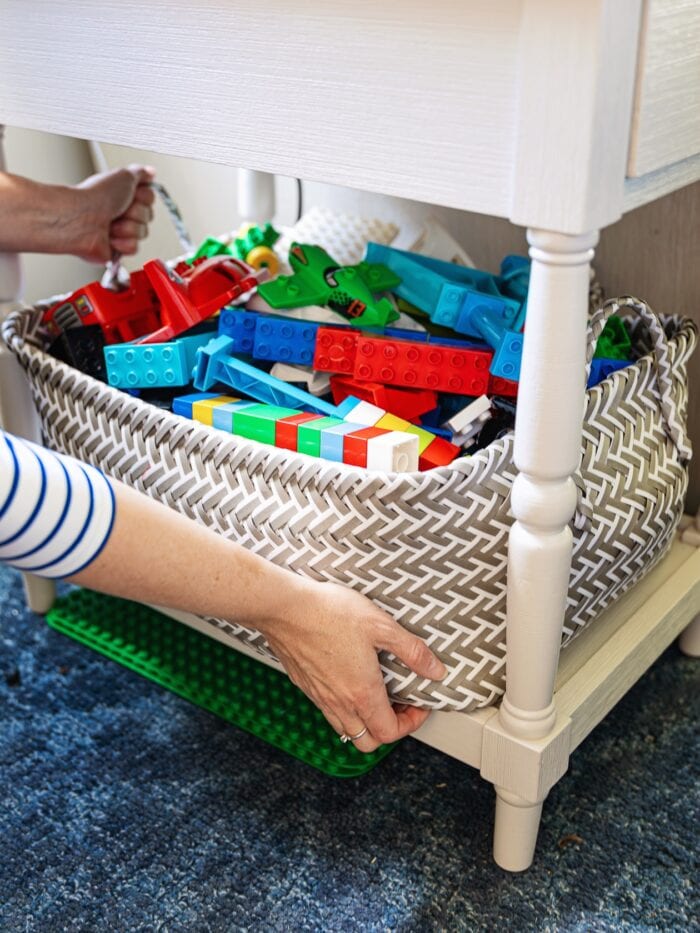
Although these toys were a bit more visible, the more decorative basket on the lower shelf kept these items accessible to the kids but still mostly out of (obvious) sight.
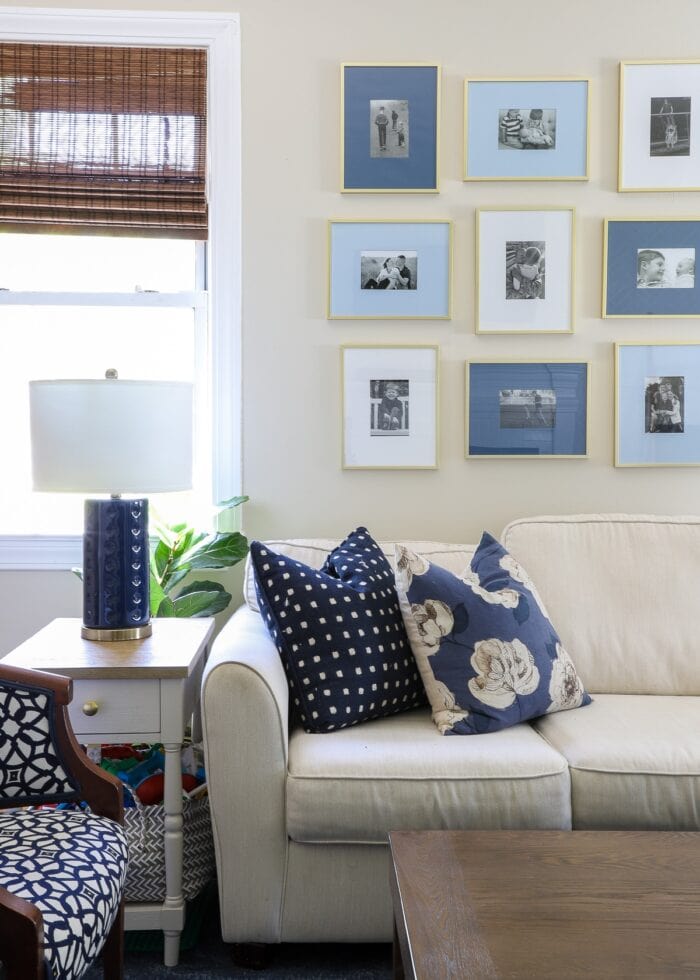
Furniture with Hidden Storage Space
These days, there are lots of “real” furniture options with added built-in storage such as benches, coffee tables, storage trunks, and ottomans. Replacing traditional versions of these items with ones that have surprise storage can help you neatly tuck away toys, board games, art supplies, crayons, and more.
Tip #2 – Create Zones
Regardless of how spacious your living room is, can you arrange the furniture to create obvious “play” and “relax” zones? Designating toys to particular area(s) of the room can prevent them from being everywhere, all the time. Architectural features such as nooks, bump-outs, corners, and bay windows are obvious places to create a dedicated toy “zone.”
Our almost 20′ long family room didn’t have an obvious nook we could dedicate to the kids, but we could create one without our furniture layout.
We opted to “float” our sofa/tables/TV arrangement in the center of the room, creating an almost 5′ wide space along the entire far wall…the perfect small space for a dedicated art station.
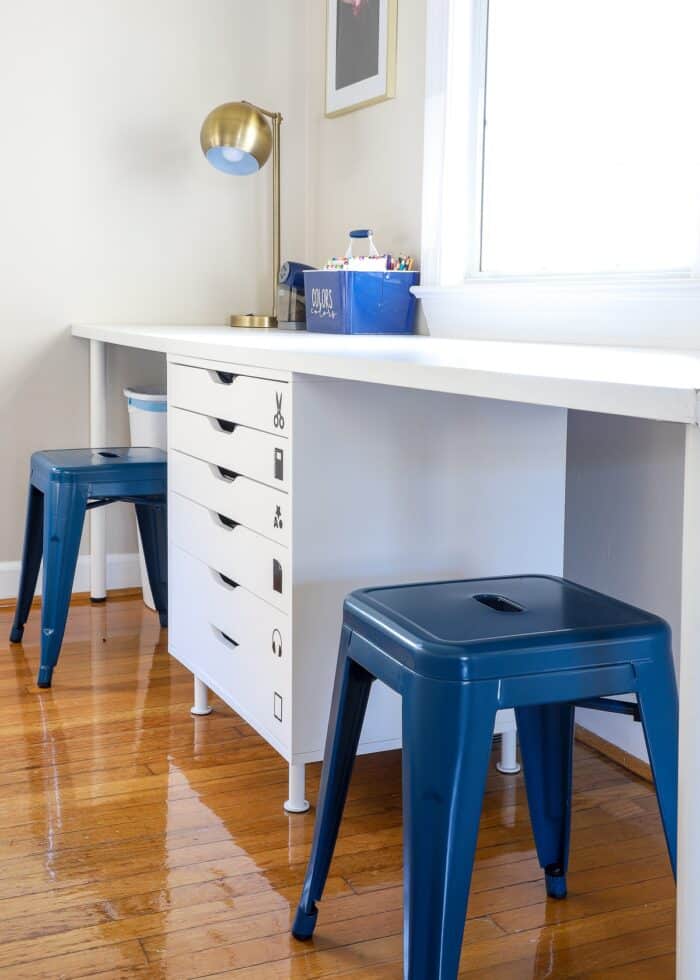
Not only did this give us a place to put more functional storage for additional supplies and toys, but it also gave the kids a dedicated space to do their projects…which, by design, was away and off to the side of the main living room space!
Tip #3 – Skip the Ottoman as a Coffee Table
As much as I love the idea of a storage ottoman, I actually advise against it when combining a living room and playroom. Here’s why…
Kids like to sit at a table to play. Whether it’s assembling puzzles, building LEGO, playing with dolls, playing a board/card game, or even drawing or coloring, these activities are more comfortable at a table. And let’s be honest: parents really don’t like being down on the floor.
When you have a soft ottoman as your coffee table, it’s very difficult to do these activities, which can then cause kids to…spread out all over the floor. But by having a sizable, hard coffee table in front of the couch, you can have your snacks and drinks AND space for puzzles, games, coloring, train track, and more.
Admittedly, I picked this oversized coffee table as a way to simply fill up our very large family room, but it ended up being one of the best choices for the kids too.
Thanks to the addition of kid-sized stools (that serve as extra seating and can neatly be tucked underneath), there wasn’t a minute of family time when the kids weren’t seated here building, coloring, playing, etc.
And an added bonus? There was no need to add a dedicated train table, LEGO table, etc.
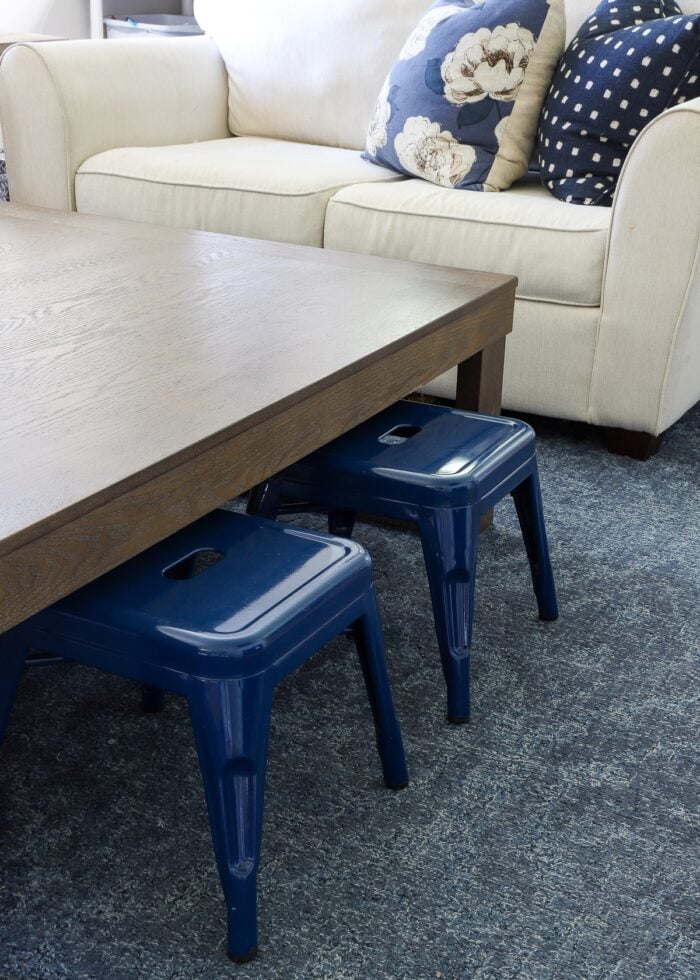
Tip #4 – It Doesn’t ALL Have to Be Concealed
I understand the desire to get a lot of the brightly-colored, noisy, plastic toys all put away. But I’d also remind you that this is a family space, and it really is okay to have some things out on open shelves, on the wall, etc.
That said, the line between having “just a few things out” and “our family room is now the playroom” can be a tricky one to walk. What you leave out and how much are key.
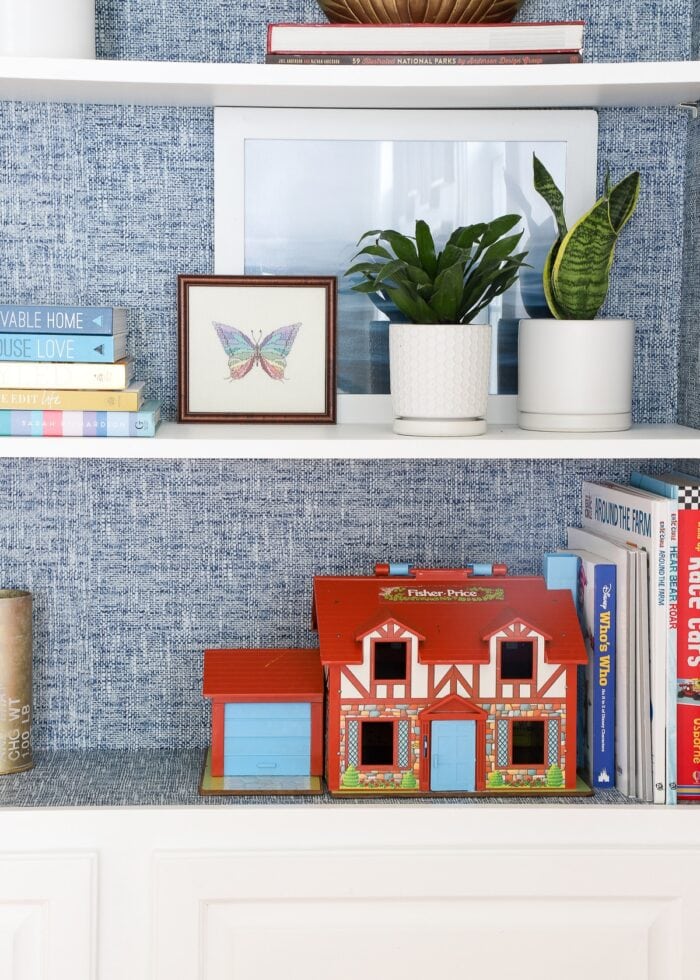
A few well-placed kids artwork, handcrafted toys, wooden toys, or nostalgic items tend to blend into decor and bring some interest to a space without risking the feel of a preschool classroom.
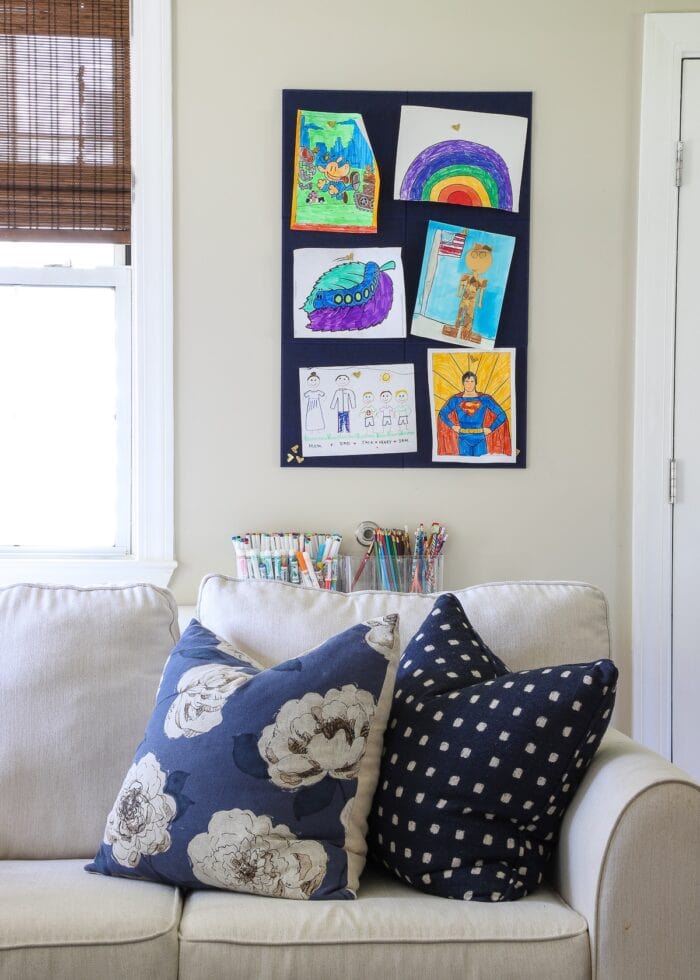
Tip #5 – Consider Alternative Locations
If you’ve been coming around here for any length of time, you know that I very much like to have 100% of a home category all together (e.g., children’s toys, craft supplies, camping gear, cooking essentials, etc). I really don’t like things spread across the house, as I find it makes clutter feel more excessive and it becomes way too hard to find what you need when you need it.
But when you’re combining a playroom into a living space, you might find there are just some things that are best stored elsewhere. Whether it’s because they’re too noisy, too colorful, too big, or too messy, it really is okay to consider alternative storage areas for certain toys. Good locations include: nearby closets, garage storage bins, and bedrooms.
We were able to fit most of our toys into the concealed storage systems I’ve shared so far, but not everything.
The dress up clothes, weapons, and accessories grew so out of control that a single basket in the corner was no longer sufficient. As such, we moved all these items up to the boys’ bedroom closet into a dedicated dress-up station with hangers, hooks, and racks. As much as I don’t like splitting things up, this closet remains one of the very best things we did in this entire house!
Additionally, games, some art supplies (like kinetic sand and perler beads), and LEGO sets were tucked away into upstairs closets since these toys need more supervision.
More Great Toy Storage Solutions
Looking for more great toy storage solutions? Here are just a few of our tried-and-true favorites:
- The Best Toy Storage Solutions for Every Item In the Playroom
- How to Store Tiny Toys
- How to Store Wooden Kid Puzzles
- The BEST Way to Organize Board Games
- How to Organize Small Card Games
- How to Organize Play Food
- Device Charging Station in a Drawer
- DIY Dress Up Station for Kids
- How to Sort and Store Those LEGO Sets
- How to Store Kids’ Sports Equipment
- How to Setup a Kids Art Station
- How to Store Kinetic Sand
Years ago (well before we moved into this house), I remember having a discussion with Greg about the necessity of a playroom. At the time, he didn’t love giving up valuable square footage, but I couldn’t fathom having toys in our usual living area, constantly underfoot. I was determined to always make a playroom work, no matter what.
But the reality is, not every house can accommodate a dedicated playroom. And if yours is one of them, don’t feel like you have to live in a constant mess of toys. I hope the solutions the strategies I shared here today show that it’s possible to have a stylish living room that’s truly family-friendly too.
Megan


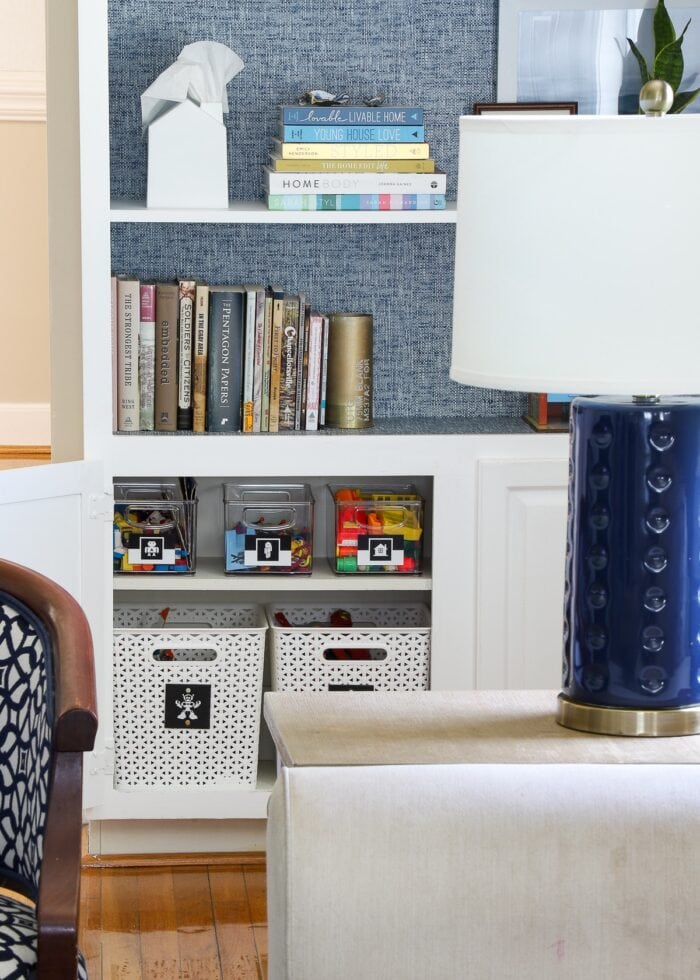
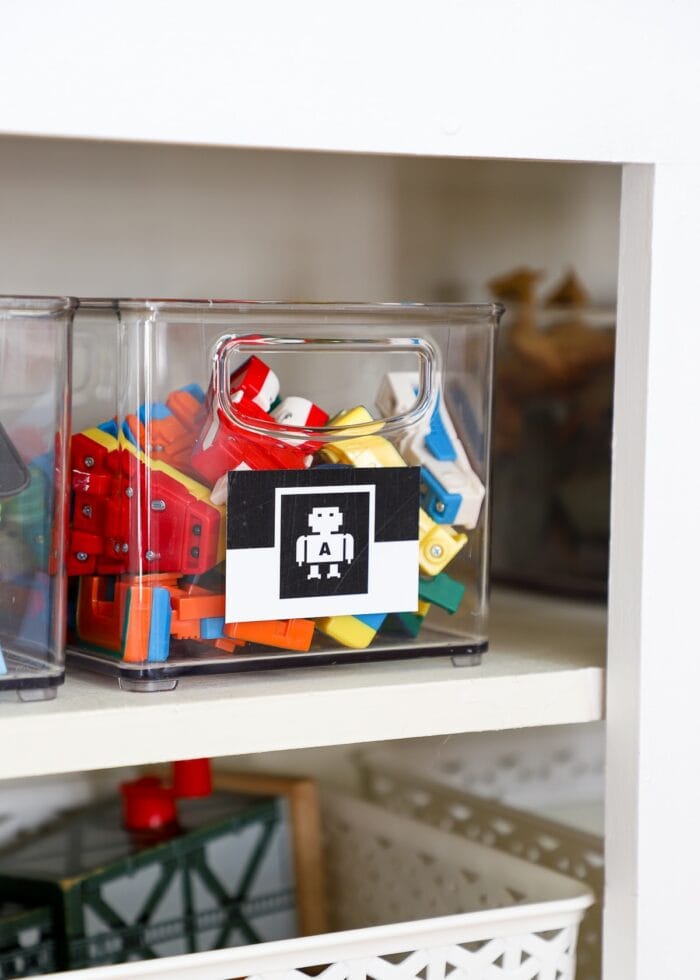
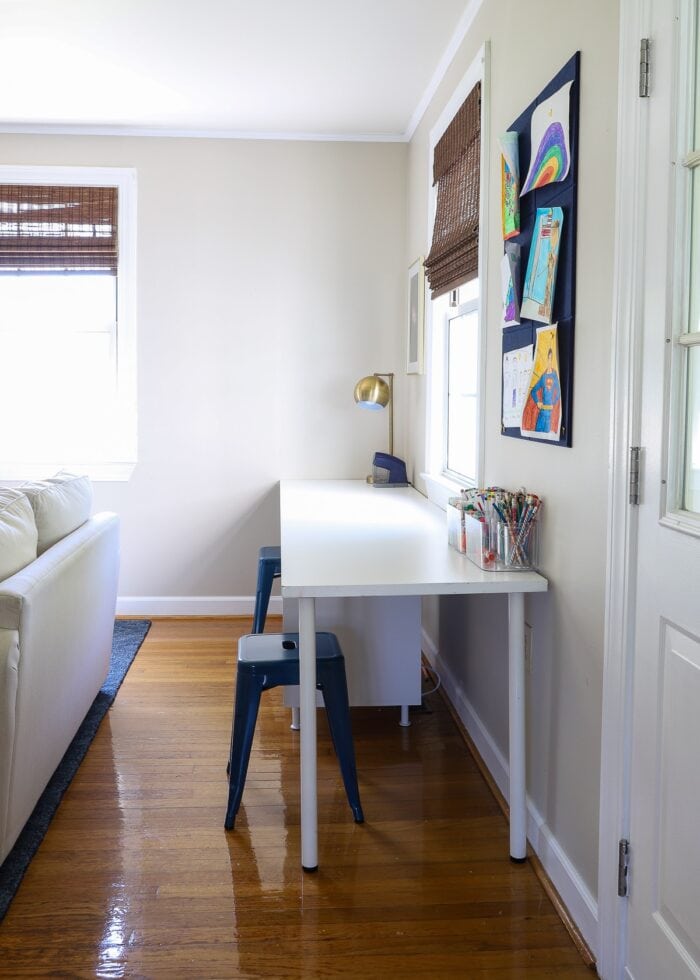

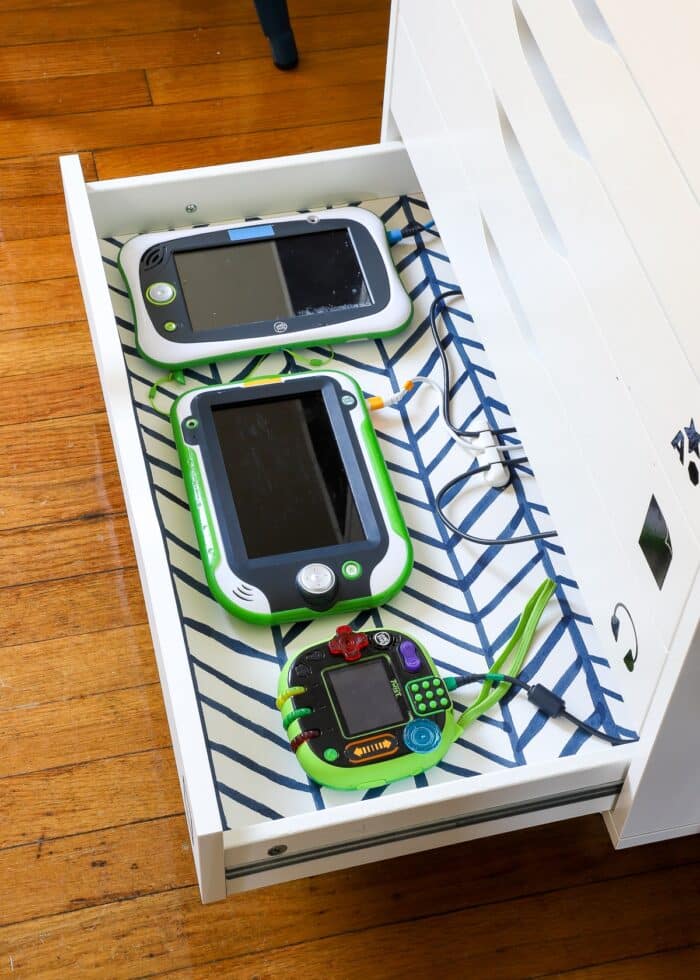
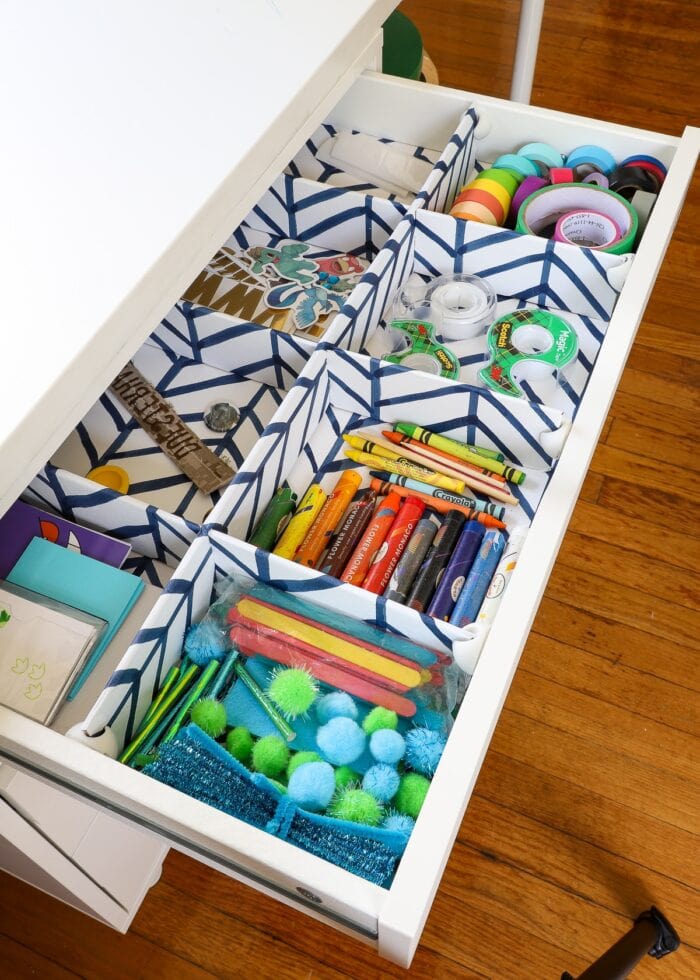
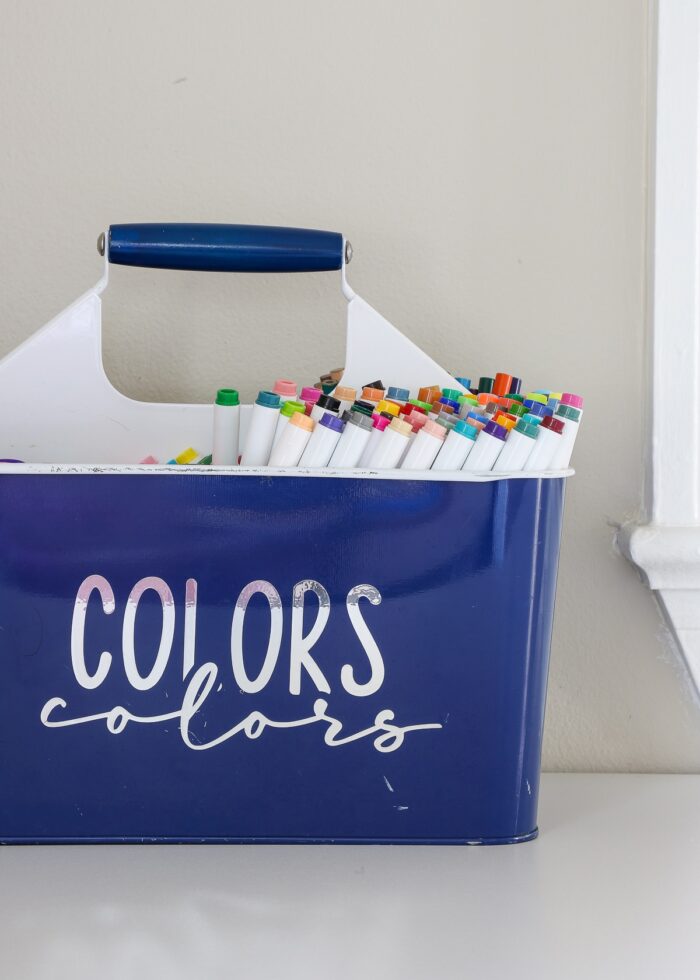
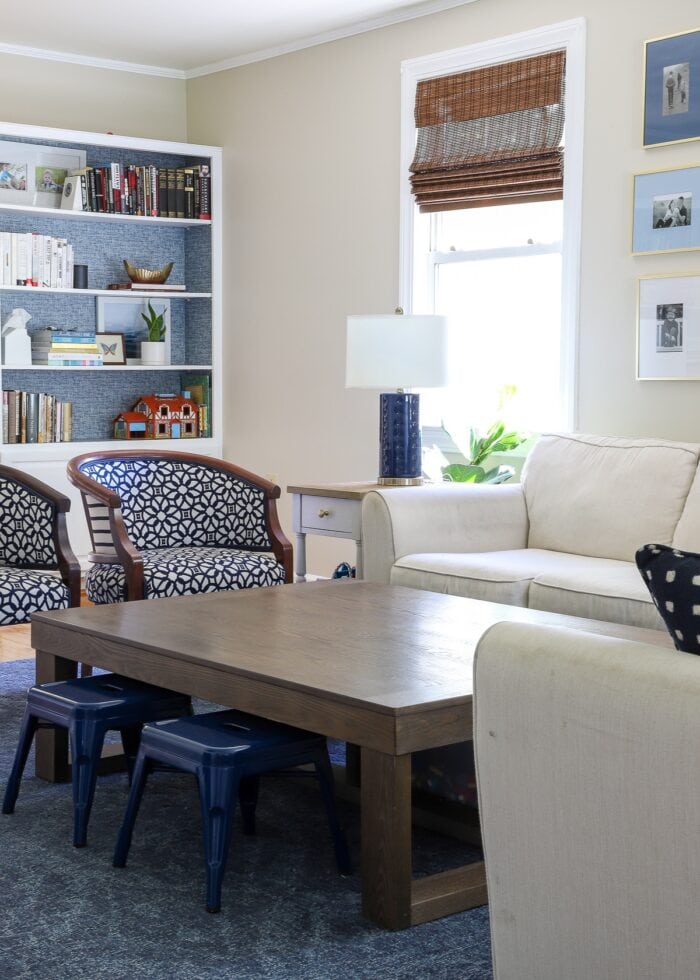
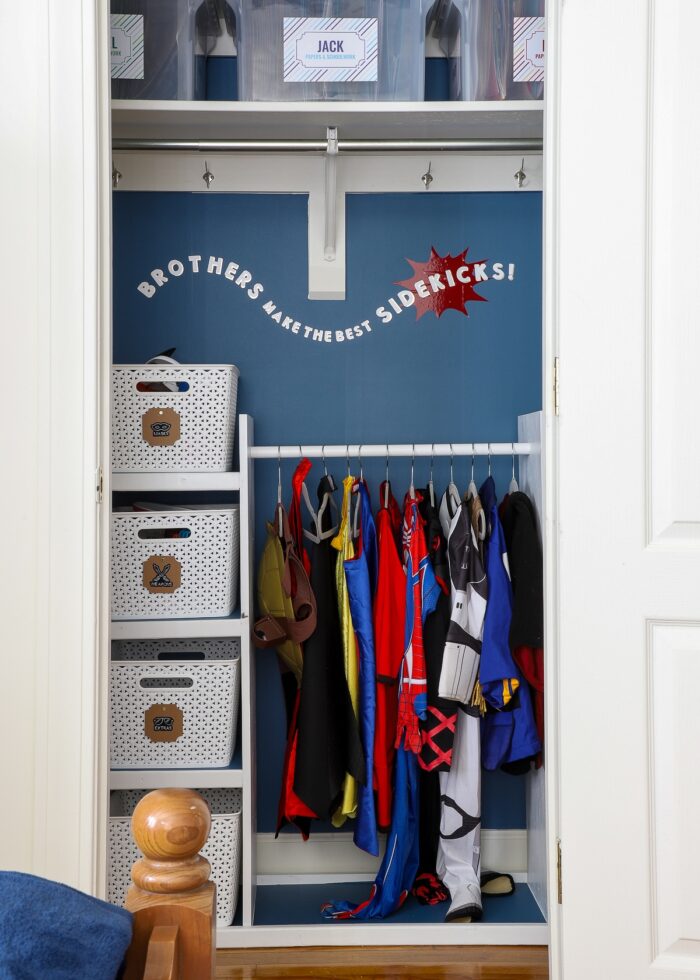
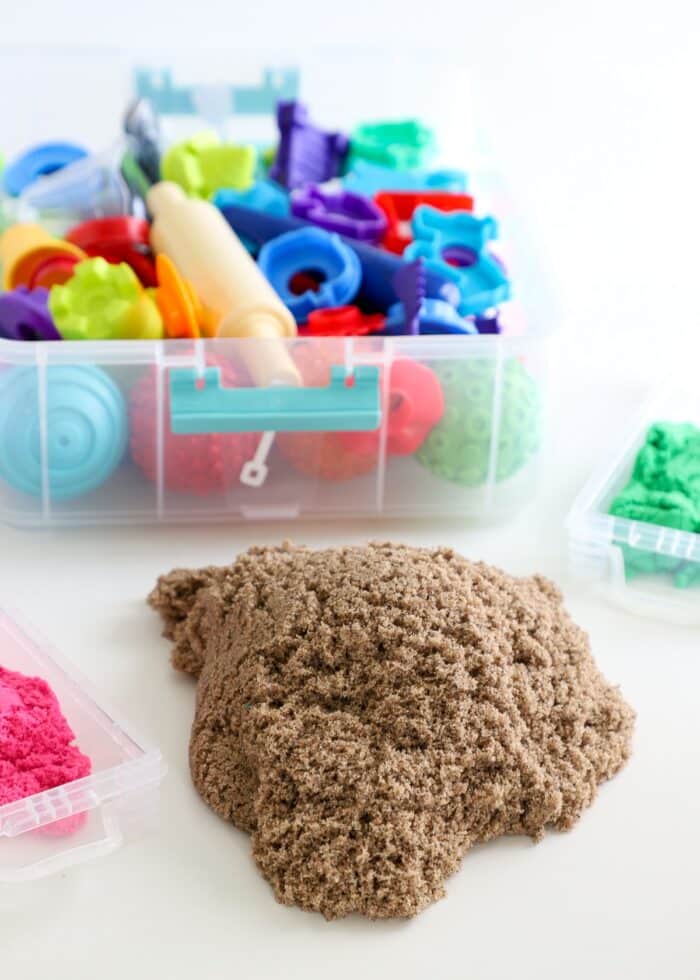
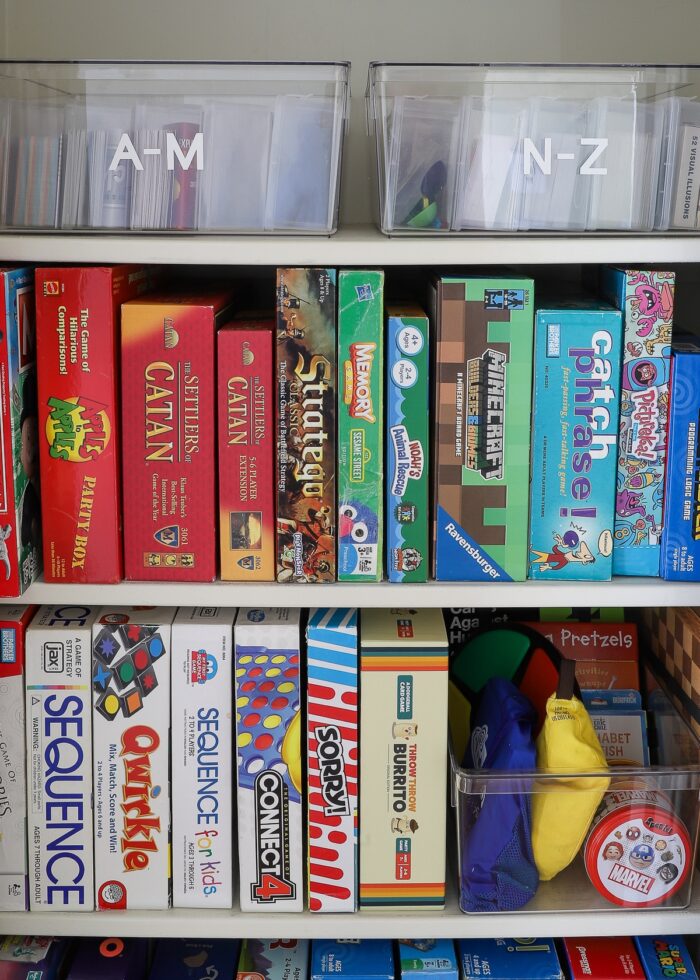
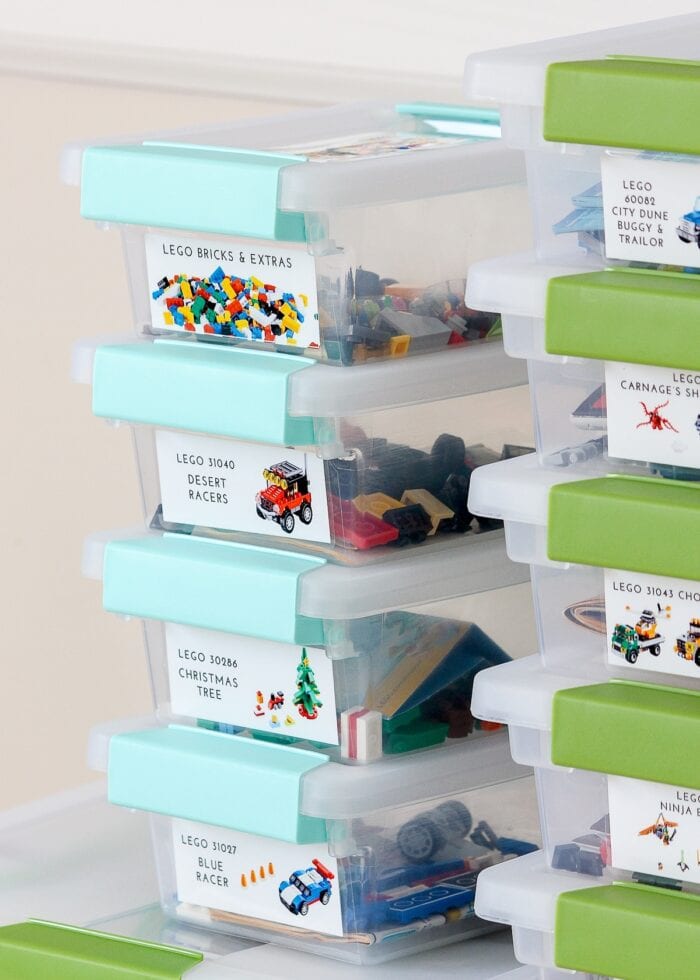
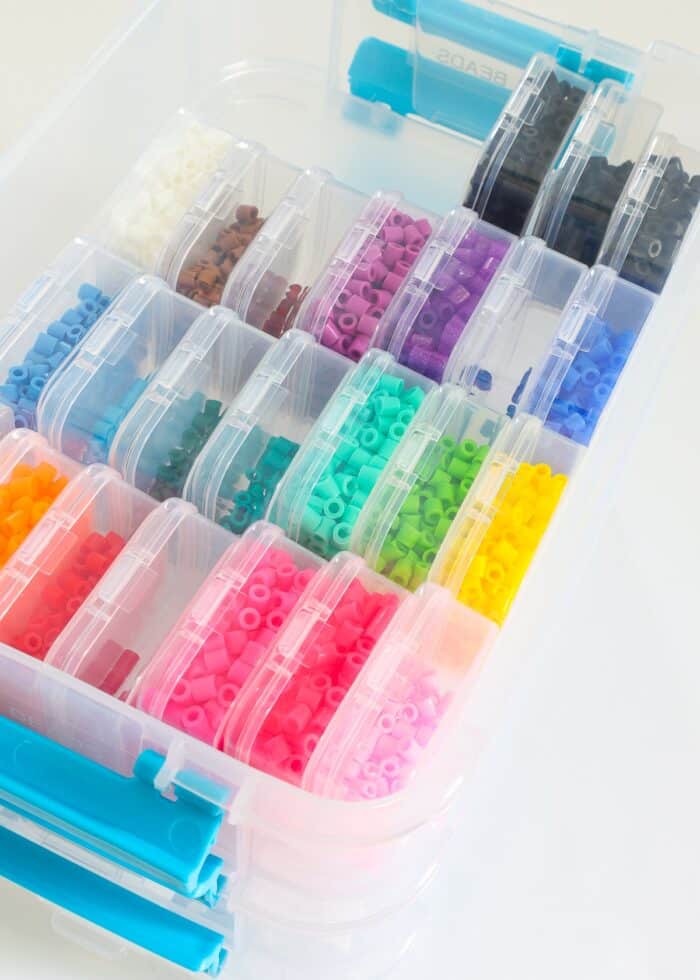


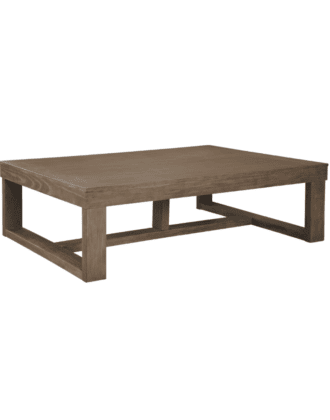

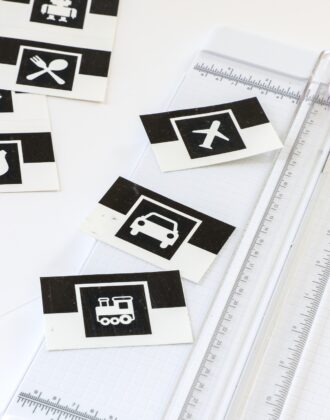
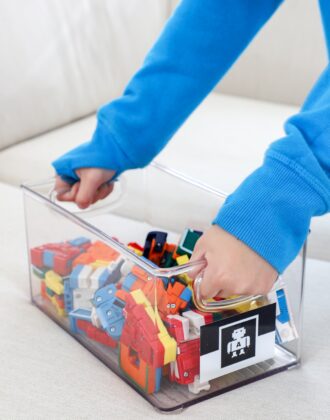
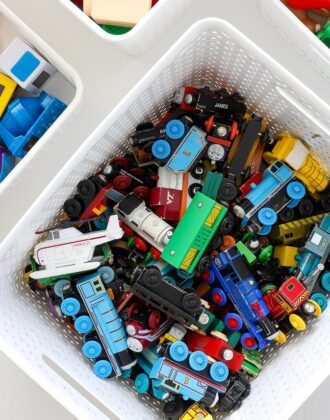
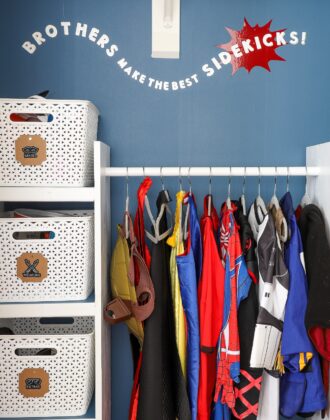

3 Comments on “No Playroom? Try These Toy Storage Ideas for the Living Room”
I really like the short stools at the coffee table. The link is to 18″ stools but the short stools look shorter than that. Are they 12″ and no longer available? Any help you can give?
On another note, will you be sharing your new post and moving story? You do those so well!
Thanks,
Kathie
Your home is lovely and tidy, dont you do anything?
Looking at the pictures of your homes always makes me so relaxed. And I just love the big coffee table. We had one when I was a kid with a shelf. It was a great place to play. I never could find one for our home when we had kids (DH thought I was crazy)
Keep up the good work!